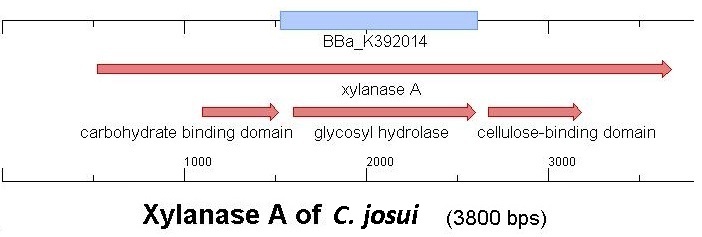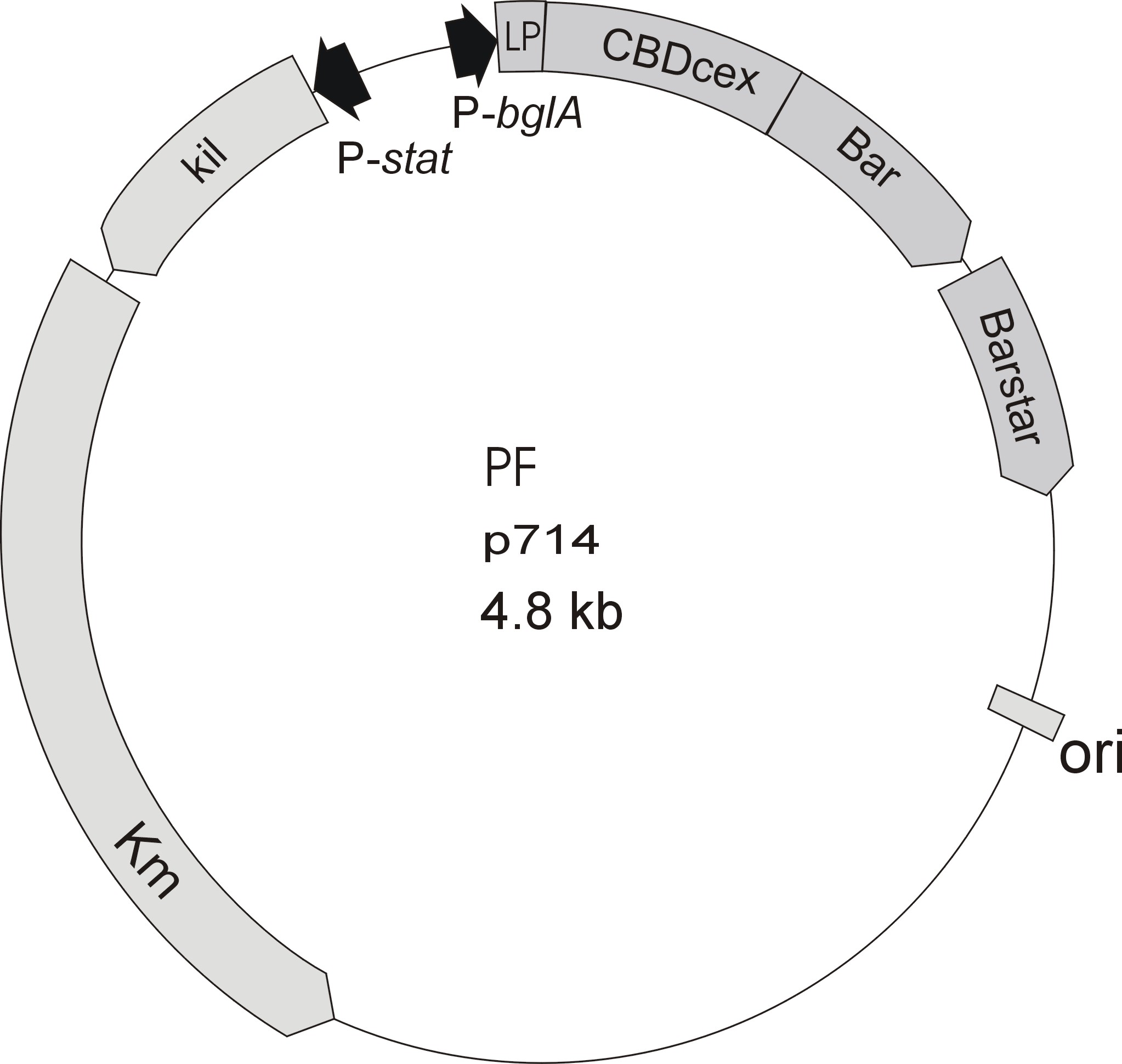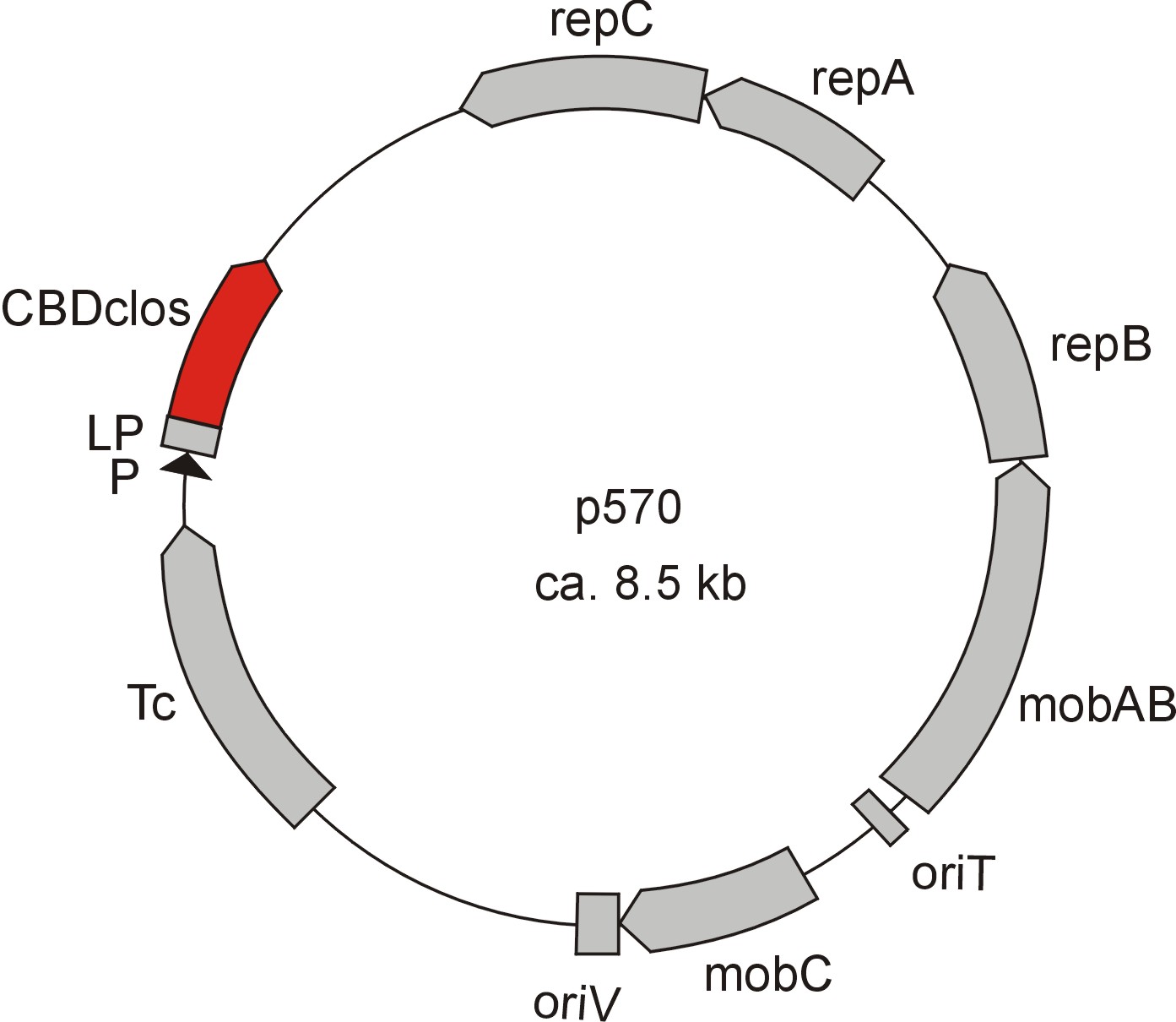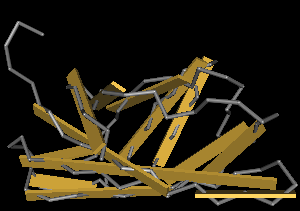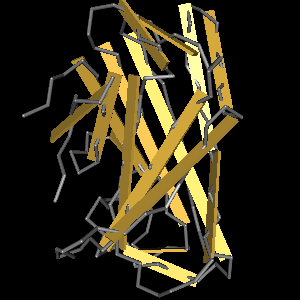Team:Bielefeld-Germany/Results/CBD
From 2012.igem.org
(→Cellulose Binding Domain - Introduction) |
(→The Binding Assay) |
||
| Line 33: | Line 33: | ||
==The Binding Assay== | ==The Binding Assay== | ||
| - | To measure the capacity of the bonding between the cellulose binding domains and cellulose many different assays have been made. One of the simplest and most often used is the [www.ncbi.nlm.nih.gov/pubmed/18573384 fusion of a green or red fluorescent protein (GFP/RFP)] | + | To measure the capacity of the bonding between the cellulose binding domains and cellulose many different assays have been made. One of the simplest and most often used is the [http://www.ncbi.nlm.nih.gov/pubmed/18573384 fusion of a green or red fluorescent protein (GFP/RFP)] |
==Cloning of the Cellulose Binding Domains== | ==Cloning of the Cellulose Binding Domains== | ||
Revision as of 23:02, 24 September 2012
Cellulose Binding Domain - Introduction
In the field of cheap protein-extraction cellulose binding domains (CBD) have made themselfes a name. A lot of publications have been made, concerning a cheap strategy to capture a protein from the cell-lysis with a CBD-tag. Also enhanced segregation with CBD-tagged proteins have been observed. Here the idea is different, we want to take advantage of the binding capacity of binding domains not only for purification reasons (it is still a benefit), but also as an immobilizing-protocol for our laccases.
To make a purification and immobilization-tag out of a protein domain, there are a lot of decisions and characterizations you have to get through.
Starting with the choice of the binding domain, the first limitation is accessibility. Our first place to look was, of course the [http://partsregistry.org partsregistry]. We found a promising Cellulose binding motif of the C. josui Xyn10A gene (<partinfo>BBa_K392014</partinfo>) there and ordered it right from the spot for our project. After some research later concerning the sequence of that BioBrick it turned out that the part is not the CBD of the Xylanase as it should be, but the glycosyl hydrolase domain of the protein (Figure 1). This result made the part useless for our project ([http://partsregistry.org/Part:BBa_K392014:Experience complete review]) and it was the only binding domain in the [http://partsregistry.org partsregistry] that fitted to our project.
So we started to search the accessible organisms we had via NCBI for binding-domains, -proteins and -motifs and asked in work-groups if they could help us out. The results of our database research were only two chitin/carbohydate binding moduls within the Bacillus halodurans genome (we ordered that stain for it's laccase <partinfo>BBa_K863020</partinfo>). One is in the [http://www.ncbi.nlm.nih.gov/nucleotide/289656506?report=genbank&log$=nuclalign&blast_rank=1&RID=0JPT9WMS01N Cochin chitinase gene] and the other in a [http://www.ncbi.nlm.nih.gov/protein/BAB05022.1 chitin binding protein].
Meanwhile the Fermentation group offered use two plasmids (p570 & p671), containing two different cellulose binding domains. The Cellulose binding domain of the [http://www.ncbi.nlm.nih.gov/nucleotide/327179207?report=genbank&log$=nucltop&blast_rank=3&RID=152ZCN0E01N Cellulomonas fimi ATCC 484 exoglucanase gene] (CBDcex) and the Cellulose binding domain of [http://www.ncbi.nlm.nih.gov/nuccore/M73817 Clostridium cellulovorans cellulose binding protein gene (cbp A)] (CBDclos). At that point we decided to use these two domains. Staying within the cellulose binding domain-family and leave other protein domains like carbohydrate binding domains aside will keep the results comparable. Like changing to a different binding material would change the binding capacities of both domains in the same way. Also we would stay within bacterial CBD and didn't have to spend time thinking about post-translational modification and glycolization.
To get to know more about these two domains and to get the sequence of the CBDs we consulted NCBI and used the [http://blast.ncbi.nlm.nih.gov/ BLAST]-tool to identify the cellulose binding domains.
The CBD of the Cellulomonas fimi ATCC 484 exoglucanase gene (Figure 6) is a C-terminal domain of the Cellulose Binding Modul family 2 (pfam00553/cl02709). This means two tryptophan residues are involved in cellulose binding, this type of CBD is only found in bacteria. Also a CBM49 Carbohydrate binding domain is found within the protein domain, where [http://www.ncbi.nlm.nih.gov/pubmed/17322304?dopt=Abstract binding studies] have showen, that it binds to crystalline cellulose, which could be a possible target for immobilization.
The CBD of the [http://www.ncbi.nlm.nih.gov/nuccore/M73817 Clostridium cellulovorans cellulose binding protein gene (cbp A)] on the other hand is a N-terminal Domain of the Cellulose Binding Modul family 3 (pfam00942/cl03026) and part of a very big, cellulose binding protein with four other carbohydrate binding moduls and a lot of docking interfaces for the proteins in its amino acid sequence (Figure 7).
The Binding Assay
To measure the capacity of the bonding between the cellulose binding domains and cellulose many different assays have been made. One of the simplest and most often used is the [http://www.ncbi.nlm.nih.gov/pubmed/18573384 fusion of a green or red fluorescent protein (GFP/RFP)]
Cloning of the Cellulose Binding Domains
The cloning of the CBDs should fit to the cloning of our laccases, so we designed the BioBricks with a T7-promoter and the B0034 RBS to have a similar method of cultivation. After we investigated the restriction-sites it showed, that at least for the characterization of the CBDs a quick in-frame assembly of the CBDs and a GFP would be possible, because nether the CBDs nor the GFP (<partinfo>I13522</partinfo>) of the partsregistry inherits a AgeI- or NgoMIV-site, which makes Freiburg-assembly possible. To do so, we designed primers for the constructs <partinfo>BBa_K863101</partinfo>, carrying the CBDcex domain from the C. fimi exoglucanase and <partinfo>BBa_K863111</partinfo>, carrying the CBDclos domain from the C.cellulovorans binding protein. The protein-BLAST of the two CBDs gave a exact picture of which bases are count to the binding domains and which are not. To be sure not to disturb the folding anyway we kept 6 to 12 bases up and downstream of the domains as conserved sequences.
| CBDcex_T7RBS | 80 | TGAATTCGCGGCCGCTTCTAGAGTAATACGACTCACTATAGGGAAAGAGGAGAAATAATGGGT CCGGCCGGGTGCCAGGT |
| CBDcex_2AS-Link_compl | 56 | CTGCAGCGGCCGCTACTAGTATTAACCGGTGCTGCCGCCGACCGTGCAGGGCGTGC |
| CBDclos_T7RBS | 73 | CCGCTTCTAGAGTAATACGACTCACTATAGGGAAAGAGGAGAAATAATGTCAGTTGAATTTTACAACTCTAAC |
| CBDclos_2ASlink_compl | 63 | CTGCAGCGGCCGCTACTAGTATTAACCGGTGCTGCCTGCAAATCCAAATTCAACATATGTATC |
The listed complementary primers added, besides the Freiburg-suffix, a two amino acid Glycine-Serine-linker to the end of the CBDs. This is a very short linker, but as GFP-experts and [http://www.ncbi.nlm.nih.gov/pubmed/17394253 publications] described GFP and CBDs are very stable proteins and should cope with a very short linker. The benefit of a short linker is that protease activity is kept minimal.
The GFP <partinfo>K863121</partinfo> we wanted to used was an alternated version of the <partinfo>BBa_I13522</partinfo>. We made primers that added a Freiburg-pre- and suffix to the GFP coding sequence and a His-tag to the C-terminus. This part should be easily added to the CBDs and build a fusion-protein. "
"
